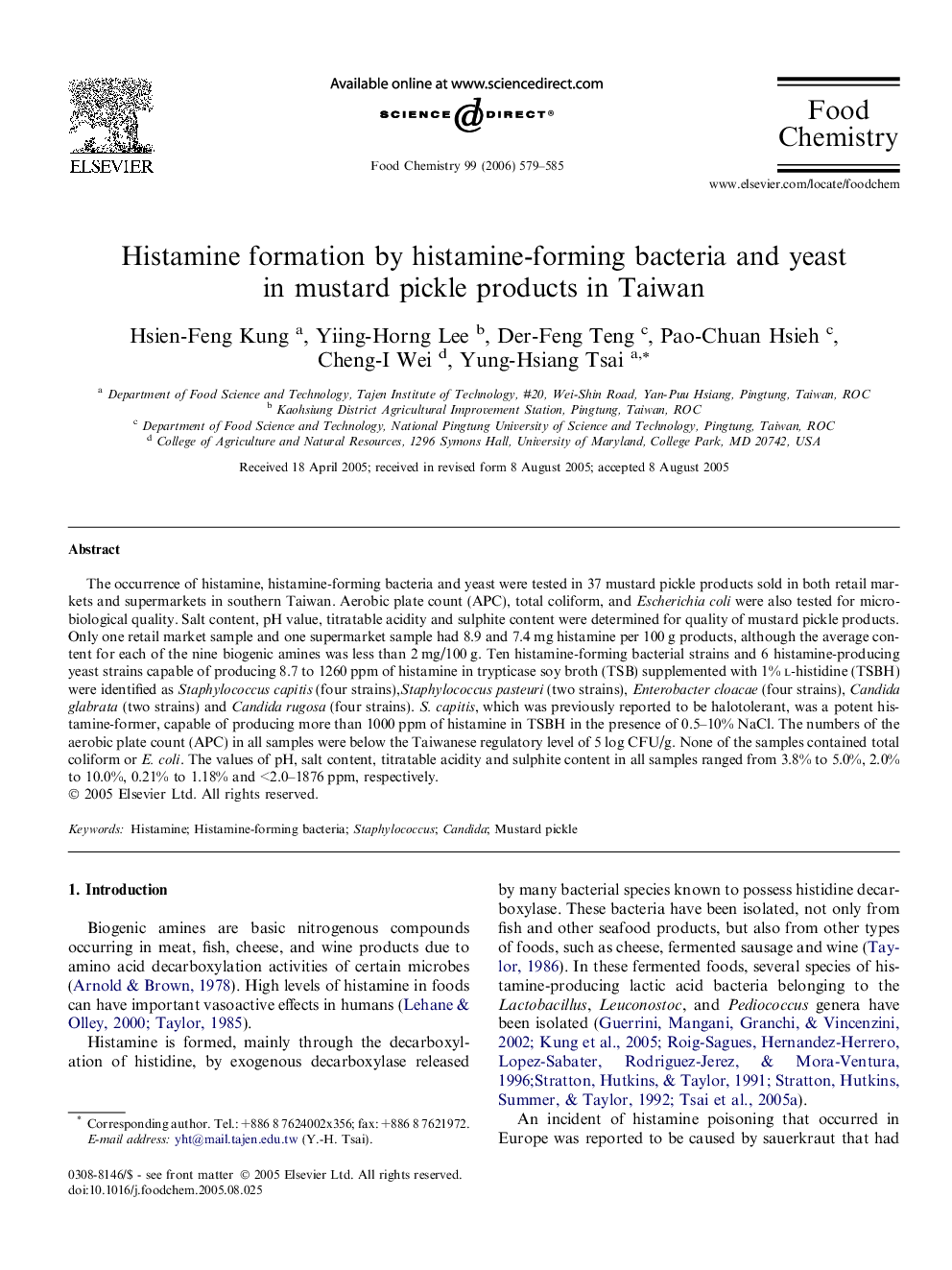| Article ID | Journal | Published Year | Pages | File Type |
|---|---|---|---|---|
| 1188692 | Food Chemistry | 2006 | 7 Pages |
The occurrence of histamine, histamine-forming bacteria and yeast were tested in 37 mustard pickle products sold in both retail markets and supermarkets in southern Taiwan. Aerobic plate count (APC), total coliform, and Escherichia coli were also tested for microbiological quality. Salt content, pH value, titratable acidity and sulphite content were determined for quality of mustard pickle products. Only one retail market sample and one supermarket sample had 8.9 and 7.4 mg histamine per 100 g products, although the average content for each of the nine biogenic amines was less than 2 mg/100 g. Ten histamine-forming bacterial strains and 6 histamine-producing yeast strains capable of producing 8.7 to 1260 ppm of histamine in trypticase soy broth (TSB) supplemented with 1% l-histidine (TSBH) were identified as Staphylococcus capitis (four strains),Staphylococcus pasteuri (two strains), Enterobacter cloacae (four strains), Candida glabrata (two strains) and Candida rugosa (four strains). S. capitis, which was previously reported to be halotolerant, was a potent histamine-former, capable of producing more than 1000 ppm of histamine in TSBH in the presence of 0.5–10% NaCl. The numbers of the aerobic plate count (APC) in all samples were below the Taiwanese regulatory level of 5 log CFU/g. None of the samples contained total coliform or E. coli. The values of pH, salt content, titratable acidity and sulphite content in all samples ranged from 3.8% to 5.0%, 2.0% to 10.0%, 0.21% to 1.18% and <2.0–1876 ppm, respectively.
